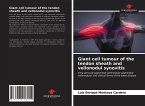The pattern of formation of the rectus sheath from the aponeuroses of external oblique, internal oblique and transversus abdominis muscles shows regional variations. The prevalence and location of the arcuate line which marks the inferior extent of the posterior wall of this sheath exhibits inter-population differences. Data on the Kenyan population however remains scarce and yet the location of this line may be important when harvesting rectus abdominis muscle for musculocutaneous flaps. Further, it is not known whether the variations on how the rectus sheath is formed and in the position of the arcuate line influence the histomorphology of this sheath. This knowledge may help explain the contribution of the rectus sheath in the biomechanics of the ventral abdominal wall. This descriptive cross sectional study reports the macroscopic and microscopic anatomy of the human rectus sheath.








